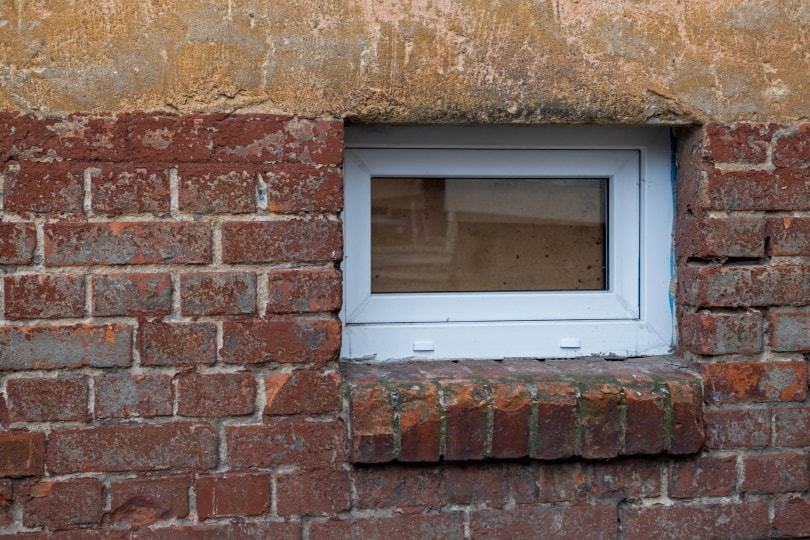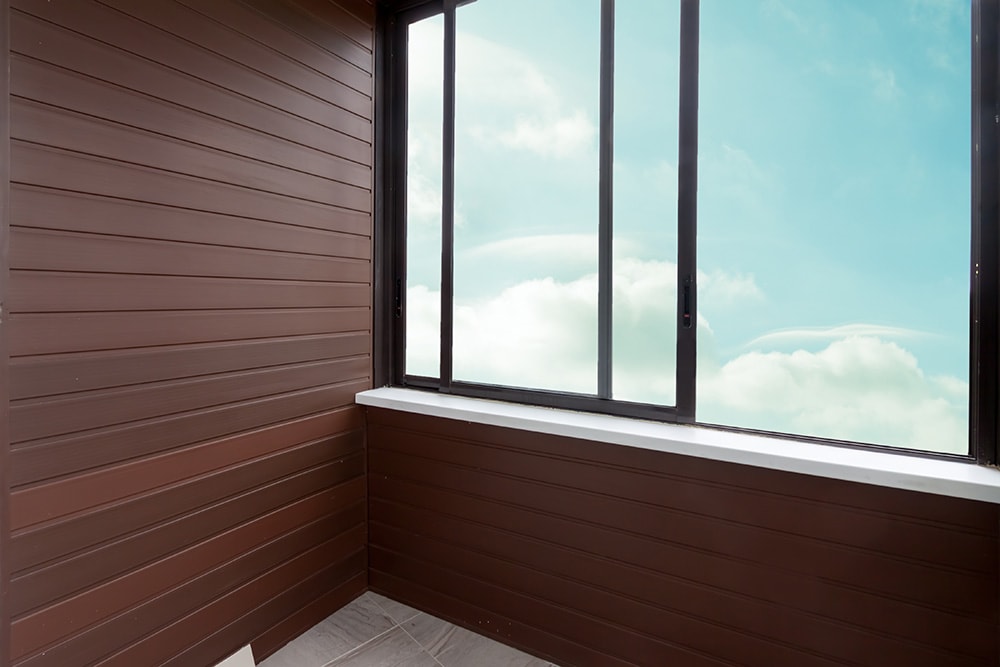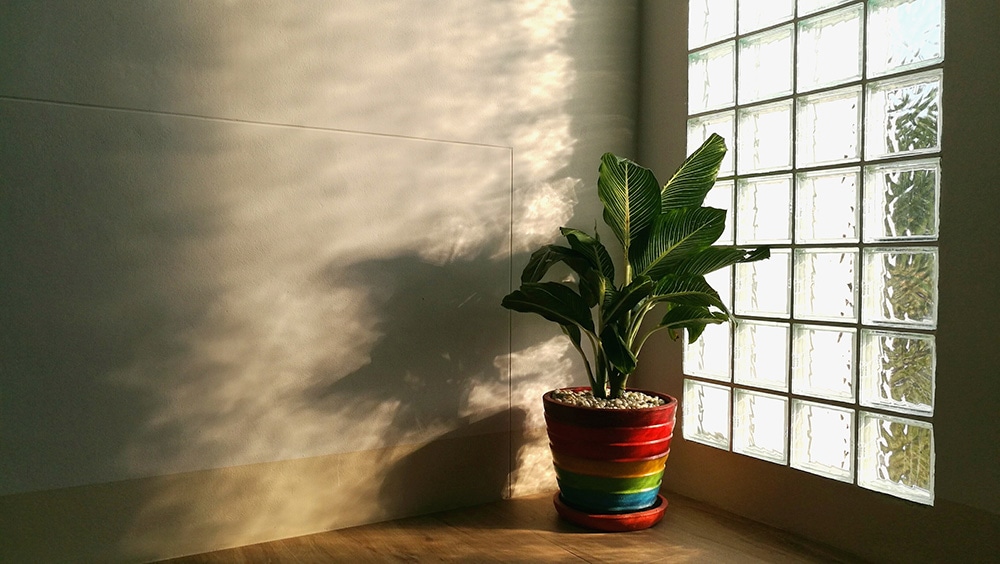6 Types of Basement Windows (With Pictures)
-

- Last updated:

If you’re looking to update or finish your basement, there is a good chance you will need to consider adding new windows. Basement windows are not quite like other windows. Basement windows are installed near the ground and are often small and out of the way.
Even if you are not planning on gutting and redoing a basement, you might just be curious about what kinds of windows are allowed to be installed in a basement. There are numerous different types of basement windows. Some of these windows are found elsewhere in a home, while others are mainly installed on basements for their unique properties.
The 6 Different Types of Basement Windows
1. Casement Windows
| Moveable: | Yes |
| Egress capable: | Yes |
| Type of basement: | Above grade |
Casement windows are common in basements that lie partially above ground. Casement windows, also known as crank windows, are opened by rotating a simple crank which then pushes the window outward. Casements are common in older homes or as basement bathroom windows. Casements allow for ample space to let in light and air. They are also large enough to meet egress requirements in most cases.
Casement windows can only be used on basements that are above grade because they need clearance to open fully and basements that are completely below grade do not allow for the casements to open properly.
2. Hopper Windows

| Moveable: | Yes |
| Egress capable: | Yes, but uncommonly |
| Type of basement: | Any |
A hopper is a type of window that has hinges at the bottom. These hinges allow the window to open inwards, towards the basement, and down. These windows are popular with basements because they let in the most amount of air from the outside. When a hopper window is open, it doubles as a window and a vent. The shape and angle of the window allow air to flow into the basement, which is an extremely desirable quality.
If you are worried about privacy, hopper windows can be purchased with frosted or opaque glass to prevent people from seeing in. These windows are also usually quite small and will not allow a grown adult to fit into your basement. Hoppers are simple windows that are easy to operate. They provide natural light into a basement as well as a source of ventilation for fresh air.
3. Awning Windows
| Moveable: | Yes |
| Egress capable: | Yes |
| Type of basement: | Any |
An awning window is similar to that of a hopper but with an opposite configuration. Awning windows have hinges at the top of the window frame, and the pane moves outwards and upwards instead of inwards and downwards. Awning windows are therefore less efficient at ventilation than hopper windows but still serve the same purpose. These windows are often small and installed as a way to increase natural light and airflow to a basement.
The window gets its name because when it is opened, it creates an awning effect where the pane overlays the ground at an angle. This also allows these windows to be opened during rain or snowstorms, as the glass will keep the water from flowing into the basement. A hopper window cannot be opened during rain because it risks having the rain pour directly into the basement.
4. Slider Windows

| Moveable: | Yes |
| Egress capable: | Yes |
| Type of basement: | Any |
A sliding window, or slider, is a type of window that acts like a miniature sliding glass door. These windows are installed on tracks and allow a person to open them by sliding them to the right or the left. Sliding windows offer the chance to create large openings, which are good for letting in the air or letting people out in case of emergencies. Sliding windows are fairly common, and they are easy to upkeep and easy to lock for safety. Sliding windows glide along tracks and therefore do not rely on cranking or turning mechanisms to work properly, which is a boon for some people.
These windows can offer great views of your yard or a nearby street. Sliders can also be used to grant access to the basement from the outside. This access can constitute handing stuff through the window or using it to communicate with people in the yard.
5. Fixed/Picture Windows
| Moveable: | No |
| Egress capable: | No |
| Type of basement: | Any |
A fixed window, also known as a picture window, is another common basement window. These windows do not move, cannot open, and cannot provide ventilation or egress. Picture windows are installed simply to give the basement some natural light or a view of the yard without the safety or security concerns that a window that opens can provide.
Fixed windows can be long narrow strips, or they can be neat squares and are often seen at ground level at the base of a house. Picture windows require no upkeep, and no maintenance and they have no parts or pieces that can break or wear out other than the glass itself.
6. Glass Block Windows

| Moveable: | No |
| Egress capable: | No |
| Type of basement: | Any |
Glass block windows are similar to fixed windows except they are made from a series of glass blocks. Glass block was very popular a couple of decades ago and these types of windows can still be found in older homes. Glass block provides enhanced privacy and security over fixed windows. Unlike picture windows, glass blocks, even clear blocks, distort light so it is hard to see through them.
Glass block can also be found in an opaque variation that hides the view of the basement from the outside. Glass block is also harder to break than a single pane of glass found in a fixed window. Glass block windows were also a popular choice for bathroom windows, including basement bathrooms, for these reasons.
Egress vs. Non-Egress Windows
Egress windows provide enough space for a person to squeeze through in case of an emergency. Egress areas are required by law in any spaces that are designated as living spaces. In the building codes, these areas are called emergency escape and rescue openings. They are mandated by law to be a certain size so that people can climb out of them in case of a fire, floor, or other disasters. A space cannot be considered a bedroom or habitable area unless it has proper egress.
Egress does not simply apply to windows and doors. Any way out of a dwelling must meet strict egress codes. That includes all stairs, ramps, ladders, landings, railings, and more. Anything that can help or hinder your exit from a building is subject to egress codes.
Egress comes up a lot in conversations about basement windows because in order for a basement to be considered finished or livable it has to meet egress codes and the best way to do that is to install a window that meets the requirements. Egress laws are governed by local municipalities and if you are curious about what the rules are for your home check with your local building office. In order to label your basement as habitable, it must have windows that meet egress for escape in case of an emergency.
Conclusion
These six varieties of basement windows are the most common windows you are likely to come across below your house. There are other types of windows like single-hung and double-hung windows that can be used in a basement but are extremely uncommon. If you are looking at an existing basement or looking to add windows to your current basement, chances are you are going to be dealing with one of these types of common windows.
Featured Image Credit: ANDY RELY, Shutterstock
Contents

